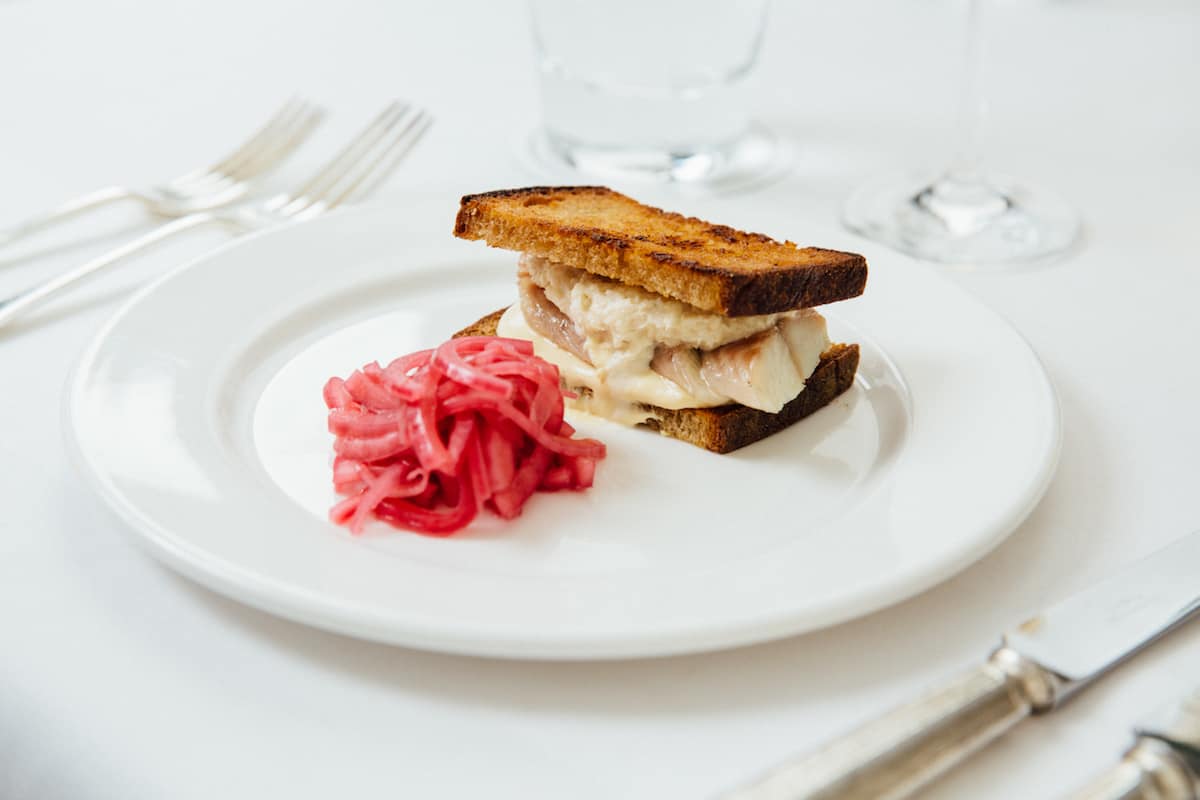
In that typical British tradition of stealing an idea from another culture and passing it off as your own, the sandwich – as its known today – takes its name from John Montagu, the 4th Earl of Sandwich. Inspired by the Earl’s visits to Greece and Turkey, where mezze platters were often prepared with dips, cheeses, and meats all served between layers of bread, legend has it that Montagu ordered a dish that he could eat with one hand, without leaving the card table during a 24-hour gambling binge in 1762.
While John Montagu (or his house cook) is often credited for creating the sandwich, the concept’s origins date back to hundreds of years beforehand. The earliest recognised form was, in fact, enjoyed by Hillel the Elder – a Jewish leader and rabbi – who suggested eating bitter herbs sandwiched between unleavened matzo bread over 2000 years ago. Known as the Korech or “Hillel sandwich”, Hillel’s creation has become widely associated with Jewish Passover. 2000 years on, sandwiches are popular all over the world, with each region seemingly having their own take on the concept. According to an article published by The Guardian, Britain’s sandwich industry made and sold £8 billion in sandwiches in 2017, and the British Sandwich Association suggests around 11.5 billion sandwiches are consumed in the UK every year.
In 2019, London’s upscale sandwich scene is booming. Specialist sandwich shops are opening at an astonishing rate; countless bakeries of note have sprung up, making exceptional bread easier to source; and Tata Eatery’s famous £14 katsu sando has dominated our Instagram feeds all summer. One of London’s most – dare I say it – iconic, time-tested sandwiches has been on the menu at Quo Vadis since head chef Jeremy Lee took over in 2012. Bringing a signature dish of his from The Blueprint Café to the Soho members’ club’s ground-floor restaurant (which is open to the public), the smoked eel sandwich is a creation far greater than the sum of its parts.
Known for his seasonal British cooking, Jeremy Lee utilises an ingredient once adored in London for his famous sandwich. Eels have suffered a lapse in popularity since the early 1900s, however, seldom found outside London’s few remaining traditional pie and mash shops. Smoked eel, however, is a far more accessible introduction to eating the snake of the lake; texturally more charming than its jellied variant and filleted so there’s no need to spit out the bones. Here, the smoked fish is teamed with fresh horseradish cream and a whisper of Dijon mustard, sandwiched between two slices of Poilâne sourdough that’s cut thin, slathered with butter and fried. On the side, a fistful of lightly pickled red onion ribbons accompany and add another depth to the final result.
The sandwich is on the small side, but its size is well suited to its profound richness: evidence of the dish’s attention to detail and sublime balance. The oily, deeply umami eel is met with the nose-running piquancy of the horseradish then the sweetness of the onions alongside the fattiness of the butter that cloaks the crucially thin bread. It’s executed with an uncommon level of finesse and pristine elegance that’s well suited to the restaurant with its dining room flooded with natural light during the day, filled with white linen-cloaked tables, plush banquettes and sleek service to match.
Other highlights from the seasonally-led menu included the likes of salty whipped cod’s roe delicately scooped into lettuce cups and capped with a spoonful of salmon roe. A loin of venison was perfectly cooked, simply accompanied by a generous portion of sautéed mushrooms with garlic and shallots, fine beans, and clouds of unique puffball mushroom rarely seen in London restaurants.
Elsewhere, a large vol au vent encased a tranche of cured cod, joined by plump mussels and a white sauce rampant with parsley: lunch’s second highlight. A dish of spinach cannelloni was comparatively less exciting yet showcased glorious skinless tomatoes with concentrated depth of flavour. These tomatoes also featured as a side dish, simply sliced and embellished with diced shallots and a drizzle of olive oil.
To finish, pudding at Quo Vadis is a remarkably traditional affair. Summer pudding was pleasingly tart and refreshing, served with both Crème Anglaise and a dollop of Jersey cream. “La pêche melba”, on the other hand, was equally refreshing, served in a silver sundae dish, showcasing a ripe peach with tart raspberry sauce and luxurious vanilla ice cream.
Lunch at Quo Vadis is opulent but is less stuffy than jolly with nostalgia – perhaps thanks to the adjoining members’ club – remembering the Soho of yesteryear. As a result, it’s easy to lose three hours to a decadent lunch, one too many glasses of wine, and what’s, arguably, the best sandwich in London.
Following the success of dinners held earlier this year, Quo Vadis has announced the line-up for part two of the Quo Vadis & Friends: 2019 series. The series, now in its third year, sees Jeremy Lee invite his chef friends to cook a supper for both club member and non-member ticket holders. Taking place on Tuesday 24th September, Brett Graham of The Ledbury will serve a game dinner to celebrate the season. Michelin Pub of the Year winner, Marksman Public House, will follow with an event on Wednesday 9th October; completed by an evening of sustainably grown, seasonal produce from the team at Coombeshead Farm on Wednesday 12th November. Tickets for each supper will be released two months ahead of each date, with priority given to Quo Vadis members one week ahead of general release date, and are available from the venue’s website.
Quo Vadis can be found at 26-29 Dean Street, London, W1D 3LL.